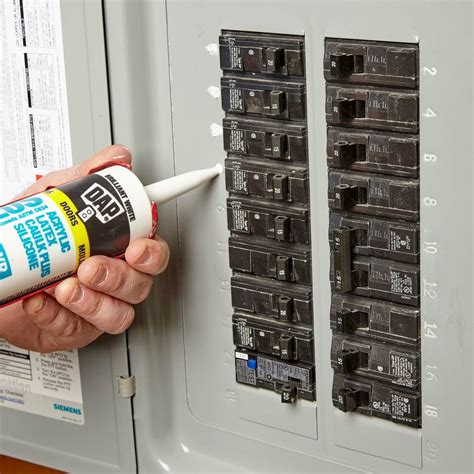How To Fix Electrical Arcing
Ronan Farrow
Mar 31, 2025 · 3 min read

Table of Contents
How to Fix Electrical Arcing: A Comprehensive Guide
Electrical arcing is a serious issue that can lead to fires, electrical shocks, and equipment damage. Understanding the causes and knowing how to address them is crucial for maintaining a safe electrical system. This guide will walk you through identifying the problem, taking necessary safety precautions, and implementing effective solutions.
Understanding Electrical Arcing
Electrical arcing occurs when an electric current jumps across a gap in an electrical circuit. This gap can be caused by a variety of factors, including:
Common Causes of Electrical Arcing:
- Loose connections: Poorly connected wires are a leading cause. Over time, vibrations or heat can loosen connections, creating an air gap that allows arcing to occur.
- Worn-out insulation: Deteriorated insulation on wires exposes the conductor, increasing the risk of arcing. This is particularly common with older wiring or wiring exposed to extreme temperatures or moisture.
- Overloaded circuits: When a circuit carries more current than it's designed for, it can overheat and cause arcing. This often manifests as flickering lights or tripped circuit breakers.
- Damaged components: Faulty switches, outlets, or appliances can create conditions that lead to arcing. Look for burnt marks, unusual smells, or signs of melting.
- Environmental factors: Moisture, dust, and corrosive substances can compromise electrical connections and insulation, promoting arcing.
Safety First: Precautions Before You Begin
Before attempting any electrical repairs, prioritize your safety:
- Turn off the power: This is absolutely paramount. Turn off the breaker or unplug the affected appliance completely before beginning any work.
- Double-check the power: Use a non-contact voltage tester to verify that the power is indeed off.
- Use appropriate tools: Employ insulated tools to prevent accidental shocks.
- Wear protective gear: Consider wearing safety glasses and gloves.
- If unsure, call an electrician: Electrical work can be dangerous. If you're uncomfortable or unsure about any step, call a qualified electrician. This is especially important for complex systems or if you suspect extensive damage.
Fixing Electrical Arcing: Step-by-Step Guide
Addressing electrical arcing requires identifying the root cause and then taking appropriate action. This often involves:
1. Identifying the Source of the Arc:
Carefully inspect all connections, wires, and components associated with the arcing. Look for signs of damage like burn marks, melting, or loose connections. The visual clues will help pinpoint the exact location of the problem.
2. Tightening Loose Connections:
For loose connections, gently tighten the screws or terminals. Do not overtighten, as this can damage the components. If the connection remains loose or the screw is stripped, you'll need to replace the affected part.
3. Replacing Damaged Components:
Worn-out insulation or damaged components need replacing. This often necessitates replacing the entire wire, outlet, switch, or appliance, depending on the extent of the damage. This step requires familiarity with electrical wiring and safety protocols.
4. Addressing Overloaded Circuits:
If the arcing is due to an overloaded circuit, you might need to distribute the load across multiple circuits or upgrade your electrical panel. This should be handled by a qualified electrician.
5. Environmental Remediation:
If environmental factors are contributing to arcing, address the issue by improving ventilation, reducing moisture, and cleaning the area to remove dust and corrosive substances.
Preventing Future Arcing: Proactive Measures
Preventing electrical arcing involves regular maintenance and a few simple habits:
- Regular inspections: Periodically inspect your electrical system for signs of wear and tear.
- Proper wiring: Ensure that all electrical wiring is properly installed and maintained.
- Avoid overloading circuits: Don't plug too many appliances into a single circuit.
- Use surge protectors: Protect your electronics from power surges that can damage components and lead to arcing.
- Professional maintenance: Schedule regular inspections by a qualified electrician, especially for older homes or businesses.
By understanding the causes of electrical arcing, taking necessary safety precautions, and implementing effective solutions, you can significantly reduce the risk of this dangerous electrical hazard. Remember, safety should always be your top priority. If in doubt, consult a professional electrician.
Featured Posts
Also read the following articles
| Article Title | Date |
|---|---|
| How To Get A New Honda Key Fob | Mar 31, 2025 |
| How To Get Married At The Courthouse In Maine | Mar 31, 2025 |
| How To Get Rid Of Cyanobacteria In Aquarium | Mar 31, 2025 |
| How To Grow P Azurescens | Mar 31, 2025 |
| How To Disable Pdf Printing | Mar 31, 2025 |
Latest Posts
-
Mother Half Pipe This Is How I Roll
Apr 03, 2025
-
Mommed Pregnancy Test How Early
Apr 03, 2025
-
Mary Oliver How I Go To The Woods
Apr 03, 2025
-
Macon Controls Thermostat How To Use
Apr 03, 2025
-
Lucid Boost Vape How To Turn On
Apr 03, 2025
Thank you for visiting our website which covers about How To Fix Electrical Arcing . We hope the information provided has been useful to you. Feel free to contact us if you have any questions or need further assistance. See you next time and don't miss to bookmark.
